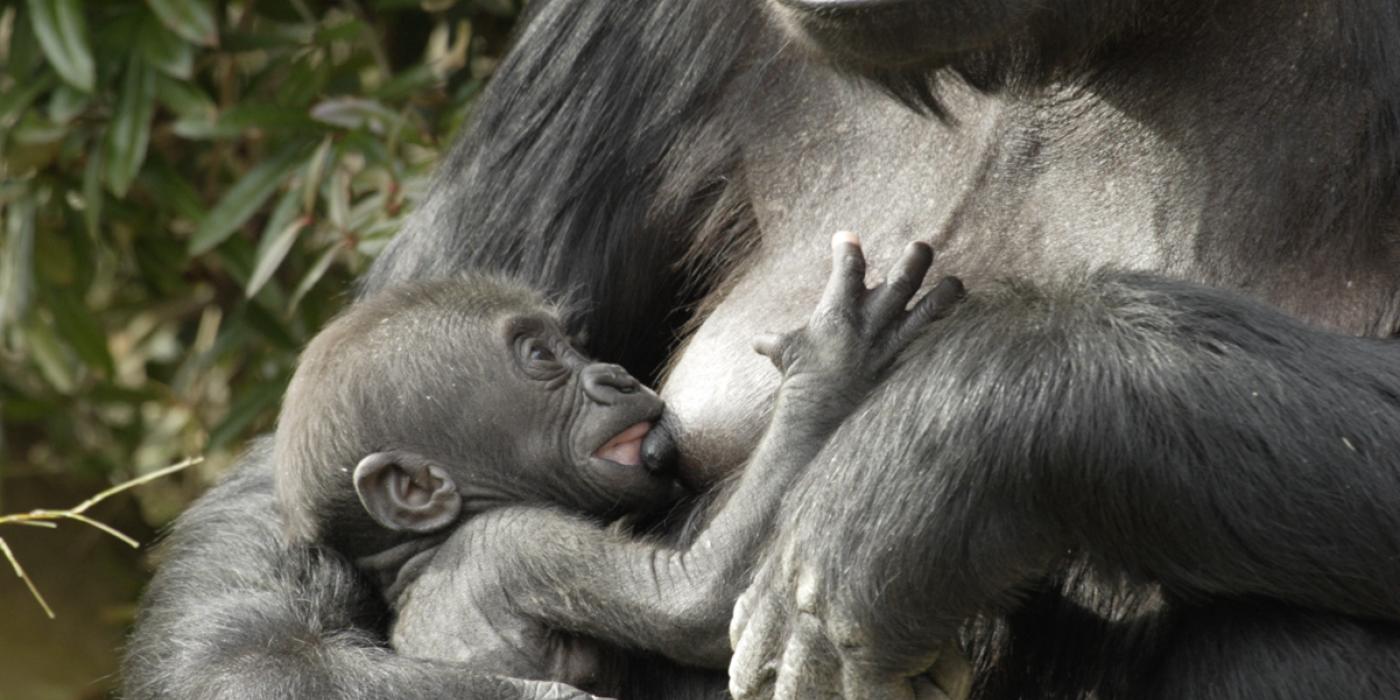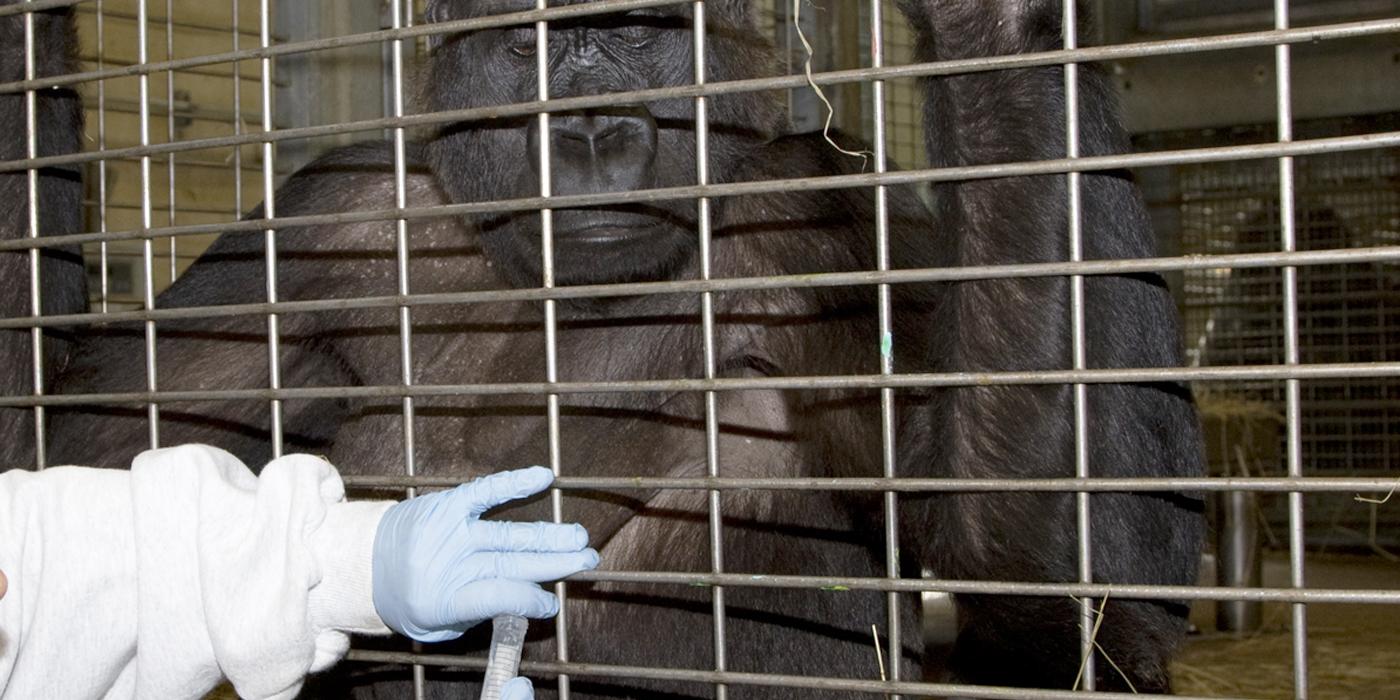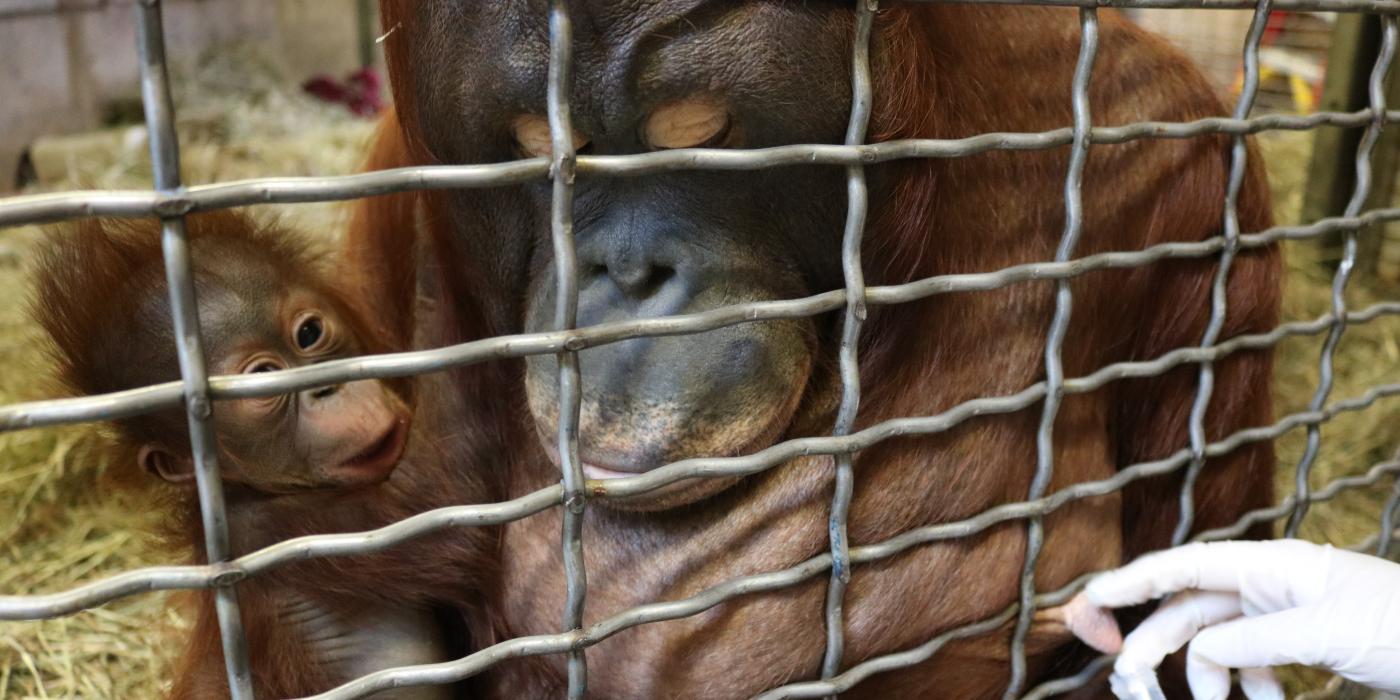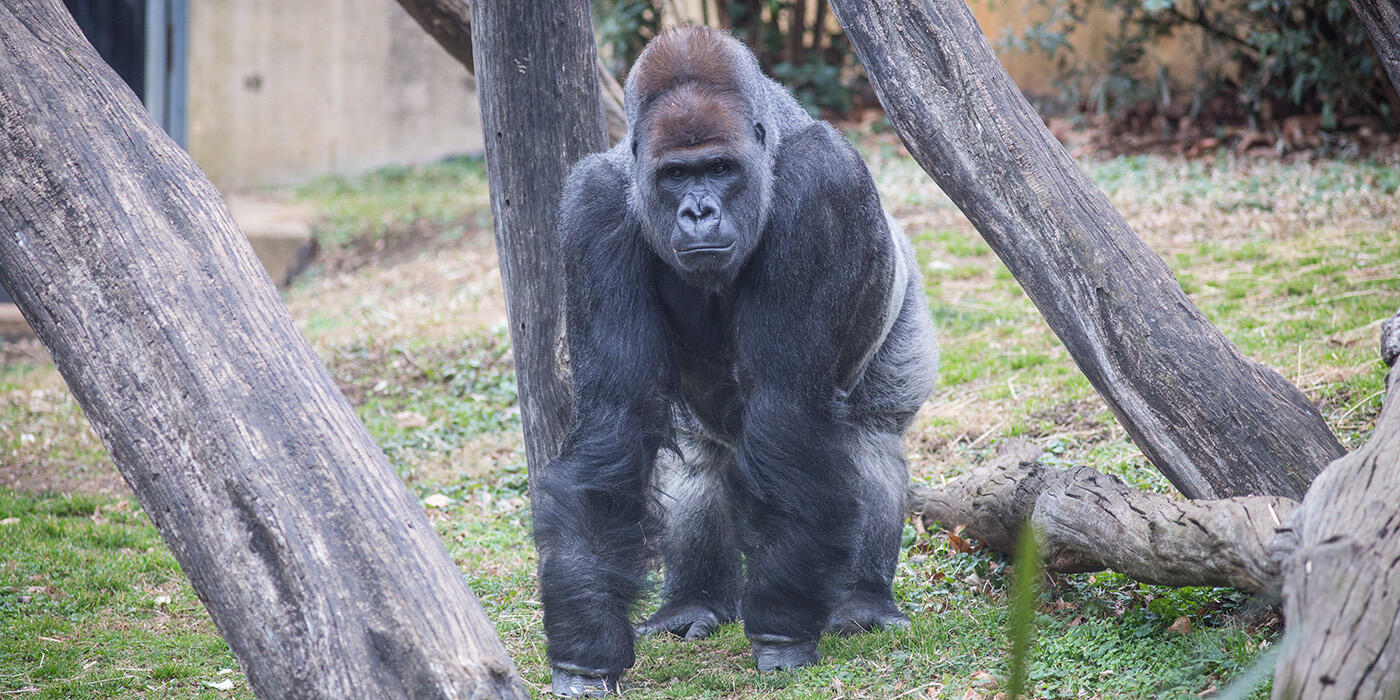The Secret Ingredient to Primate Development
What’s the secret ingredient to primate development? Milk! Whether the infant is a human, gorilla or orangutan, all primates depend upon mom’s milk. But, how similar are milk nutrients, hormones and growth factors among the species? Smithsonian Conservation Biology Institute scientist Michael Power addressed that question in an American Journal of Primatology paper entitled, “Patterns of Milk Macronutrients and Bioactive Molecules Across Lactation in a Western Lowland Gorilla (Gorilla gorilla) and a Sumatran orangutan (Pongo abelii),” published Oct. 21, 2016. Dr. Power and primate keeper Erin Stromberg discuss the science behind great ape milk in this Q & A.
Why study milk?
Power: One of the coolest things about milk is that it is the only substance that nature specifically designed to be food, made by one individual for another. Milk contains biochemical signals that mom passes to her offspring. These signals are nutrients, hormones, immunoglobulins and other factors that protect infants and help them grow.
Gorillas typically nurse for at least 3 years and orangutans for at least 6 years. In human care, these animals have full access to a regularly balanced diet, so they start to sample foods around 6 months of age. Their wild counterparts, however, typically don’t try solid foods until they are a year old.
How do you collect milk from a gorilla?
Stromberg: As part of our daily husbandry training, we ask the great apes to present their chests so keepers can look for any injuries or abnormalities. Because of this training, just three days after western lowland gorilla Kibibi was born (in January 2009), her mother, Mandara, was comfortable presenting her chest to me while Kibibi nursed. I manually expressed milk, and Mandara received a peanut reward for her cooperation. On average, we collected 1- 3 milliliters per week. Our sessions became routine, so much so that every Wednesday Mandara was ready and waiting for me at the mesh!
Power: What is most rewarding about this project is that it is a win-win; the training is a positive interaction between Mandara and Erin, and it offers us a resource for studying and analyzing milk composition in detail.
The Smithsonian’s National Zoo’s milk repository has more than 15,000 samples from more than 150 species. Over the course of this 5-year-long project, Mandara helped me add more than 200 samples to the repository—more than any other animal (or human)!
What nutrients did you look for?
Power: The basic nutrients we look for are water, protein, fat, total sugar content (lactose and more complex sugars) and total minerals—especially calcium and phosphorus. We also looked at several growth factors, including epidermal growth factor (EGF), which is very important for intestinal tract health and is especially key in infant development.
How did you compare the samples?
Power: There is one parameter that I look for in all milk samples: the amount of protein per energy (i.e. calorie). In primates, at least, the higher the protein per energy, the faster an infant grows. That has led me to always look at the amount of any milk constituent on an energy basis as well as its concentration.
If milk truly is a mother sending signals to her offspring, then the important questions become: (A) what types of signals differ between species; (B) what types differ between mothers of the same species, (C) which ones stay constant as the infant ages, and (D) which ones seem to change?
What did you learn?
Power: I was somewhat surprised by how consistent the nutrients were through the first three years. From the time an infant is around two months old to a year and a half, we found that the milk nutrients stayed relatively consistent. Then, between a year and a half and three years, there was a little more fat, a little less sugar here and there.
After three years, the nutrients and hormones started to become much more variable. One reason for this change could be that Mandara was lactating beyond the need for it. In other words, the “feedback” from Kibibi wasn’t there because she was either nursing infrequently or perhaps not at all.
Does milk differ between the species?
Power: Yes, and it likely is a reflection of the differences in the species’ biology. For example, gorilla infants grow faster than orangutan infants, so it’s not surprising that there is more protein per energy in a gorilla’s milk than in an orangutan’s milk.
A human develops at a similar pace to an orangutan in an intriguing way. Human milk contains more fat than orangutan milk, which raises the energy/calories available. And, human infants need that extra energy for their growing brains. Orangutan babies grow more slowly because an orangutan’s diet consists mostly of leaves and fruits—foods that don’t supply the orangutans with much energy. So, the babies don’t grow very fast. Orangutan milk is low in both fat and protein; human milk has higher protein and fat. The net result, however, is that the protein per energy is the same for human and orangutan milk.
It also appeared that human milk has a higher amount of epidermal growth factor (EGF) while gorilla and orangutan milk have less. EGF plays a role in intestinal tract maturation. One hypothesis that I share with my co-author in the study, Robin Bernstein, is that the modern human infant’s intestinal tract matures faster because human babies receive foods (other than milk) at a younger age than orangutan or gorilla infants do.
What are the next steps?
Power: Milk has always been a complex substance that is difficult to study. Now, we have the tools that can tell us more about the composition. For example, just by looking at the microbes in milk, our Center for Conservation Genomics is able to tell if the sample came from a human, a gorilla or an orangutan.
Because we have only examined the milk of only one western lowland gorilla (Mandara) in detail, the question becomes: does she represent what all western lowland gorilla milk looks like? Or, as with humans, are there variations within the species?
Stromberg: Mandara’s milk collection was so successful that it opened up the door to training other animals, too, both here at the Smithsonian’s National Zoo and other zoos around the country. I am collecting weekly samples from Bornean orangutan mom, Batang, who gave birth to Redd in Sept. 2016. I will continue to collect samples as long as Batang is nursing and willing to participate!





